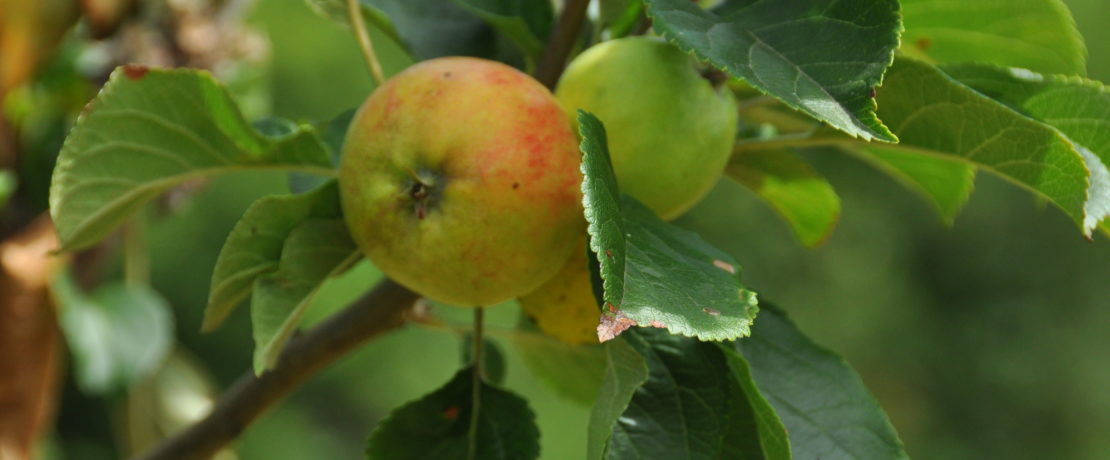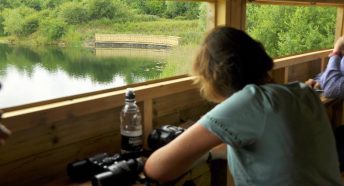A bite of history
Orchards are an important feature of our landscape and history but how much do we really know about them and the way that they have shaped Bedfordshire?
What is an orchard?
Natural England defines a traditional orchard as a site “where at least five fruit trees must be present with no more than 20m between their crown edges. Traditional orchards are managed in a low intensity way with the orchard floor grazed or mown for hay and with little or no chemical input.”
The early history of orchards in Bedfordshire
As early as the Middle Ages, orchards could be found in almost every village and alongside every farm in Bedfordshire. We know relatively little about them until the 16th and 17th centuries when they start to appear on maps and in records. The majority of farm orchards were small, around half an acre to an acre in size; they tended to be planted near the farmhouse to make harvesting, inspection and moving the fruit into storage easier. Fruit was a valuable crop so keeping the orchard within sight of the house also helped protect it from wildlife and theft and we know that in 1828 John Burr of Kempston employed two men to guard his fruit trees. However, orchard owners may also have enjoyed the proximity of blossom and birdsong. As well as the fruit, orchards were also used to house bee hives for the production of honey, to graze livestock, to make hay and as an additional source of fuel.
The 1653 lease of Harrold Hall required the tenant to, “preserve and keepe the Orchyards… in such sort as the beauty thereof may be preserved and maynteined”. The hall had 30 trees of wall fruit, which usually meant peaches, apricots and nectarines, as well as the more common apples and pears. These tender fruits tended to be grown by gentlemen rather than farmers as they required walls for shelter and more intensive management for higher yields. There were also 28 fruit trees in grassed ‘quarters’ which were surrounded by an apple hedge. In the following century, the Duke of Bedford bought 80 dwarf apple trees and 80 dwarf pear trees from a nursery in London for the new kitchen garden at Woburn Abbey.
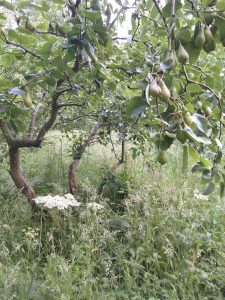
Despite these examples, when he wrote in 1808, the agriculturalist Thomas Batchelor, could still say of Bedfordshire, “The orchards are in general very small in this county. There are a few that may contain a 100 fruit trees of various kinds, and new ones of an acre or two may occasionally be met with, planted sometimes in squares of about seven yards between each tree, but there are frequently no other orchards than what are included in the gardens, consisting of four or five trees.”
However, at about this time, an early commercial cherry orchard district started to develop in south Bedfordshire and the adjacent areas of Hertfordshire and Buckinghamshire.
The coming of the railway
New fruit growing districts like the cherry orchards of the south Bedfordshire corner of the Chilterns expanded because the new railways gave access to urban markets. Bedfordshire fruit was packed into baskets and sent over the county boundary into Buckinghamshire for transporting to London, Bolton, Wigan, Manchester and Liverpool. The area also became known for Aylesbury Prunes which were a small, dark cooking plum. These were grown in orchards around Totternhoe, Eaton Bray and Eggington. By 1898 the fertile soils of Eaton Bray were home to over 100 separate orchards covering around 50 hectares in total. The area around Maulden, Clophill and Husborne Crawley became the centre of a new market gardening district, with smaller scale orchards.
New Victorian institutions like the Three Counties Asylum in Arlesey (1860) planted orchards for the benefit of their patients.
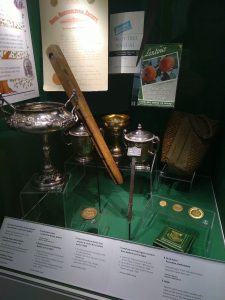
Laxton’s of Bedford
In the 1880s Thomas Laxton set up business as a ‘seed grower and merchant’ in Harpur Street. He specialised in developing new varieties of strawberries. His sons, Edward and William, went into business together in 1888 as Laxton Brothers, concentrating on apples, pears and plums. By 1900 they operated the 140 acre Tollgate Nursery in Goldington Road. In the period between 1895 and 1925 many of the most famous varieties of Laxton’s fruit were produced including the apples Laxton’s Superb and Laxton’s Favourite. The Laxton’s varieties continue to be very popular in community orchards and gardens in Bedfordshire and beyond.
The twentieth century
In the 1930s extensive apple orchards were planted in Cockayne Hatley, despite the clay soil which was unsuited to fruit trees because of the poor drainage. The estate had been purchased by John Alexander Whitehead and he aimed for intensive production. By 1939 over 2.5 million trees had been planted and more than 200 people were employed. Visitors were encouraged, “membership entitles the member to visit the orchards, nurseries and gardens at any time, to picnic in the grounds, to be provided with hot water for tea, play tennis, boating on the lake and to generally make one’s self at home.” However, the soil quality and Whitehead’s dubious business practices meant that the venture began to make losses and was eventually sold off in the 1940s.
From the 1950s onwards, orchards went into decline. By 1965, the orchard area in Bedfordshire had shrunk by 60%. Changes in farming methods, improvements in transport and government policy meant that smaller scale enterprises were replaced with larger commercial orchards, growing blocks of a smaller number of varieties. However, the 1970s saw a growth of interest in heritage orchards, traditional fruit varieties and the possibilities of orchards as habitats for wildlife conservation. In 1990 the first Apple Day was held.
The Bedfordshire and Luton Orchard Group (BLOG) was founded in 2010 and in 2017 the Orchards East project was launched, funded by the National Lottery Heritage Fund.
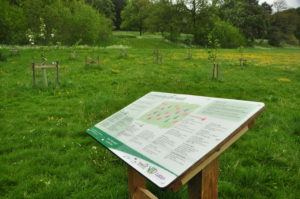
CPRE Bedfordshire Living Countryside Awards
Ever since we launched the CPRE Bedfordshire Living Countryside Awards in 2008, orchards have been a popular feature of many of the projects. A few examples will show some of what community groups are achieving around the county.
Mowsbury Hillfort (CPRE Mark winner 2016) is home to a variety of habitats including grassland, deciduous woodland, ponds and a traditional orchard. The orchard was originally planted in the 1920s with apple, pear and plum trees as well as medlars and a wild service tree. In 2012 a restoration and maintenance plan was put in place to save as many mature trees as possible. Today local residents can pick fruit for their own use. The site also has the remnant of a second orchard where fruit trees have reverted to their wild form.
Queens Park Community Orchard (Highly Commended 2018) was a legacy of the Faith Woodlands Communities project which aimed to help people from all backgrounds to enjoy and learn more about nature and the countryside. Our judges were impressed by the way in which providing self-support from within the community itself, QPCO tackled many social challenges at grassroots’ level, such as social deprivation, prejudice, racism, cultural ignorance and isolation. Many residents were unaware of the potential for traditional cheap, healthy and fresh home-grown UK produce because of very different dietary and culinary experiences. Events were organised around the orchard with the local schools linking nature and Religious Education.
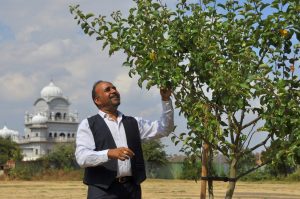
The Better Places to Live category of the 2021 awards featured orchards in two very different locations. In Luton, Edible High Town are helping to look after a community orchard in People’s Park alongside transforming disused land into edible pocket gardens and working with other local groups on a range of projects. In rural north Bedfordshire, the village of Oakley is home to a project transforming public spaces with wild flowers. The community orchard is planted with heritage fruit trees which, as far as possible are native to Bedfordshire.
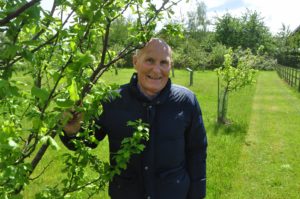
Further reading
The Orchards of Eastern England. History, Ecology and Place by Gerry Barnes & Tom Williamson provided much of the background for this article. It is a fascinating read and covers Bedfordshire, Hertfordshire, Huntingdonshire, Cambridgeshire, Norfolk, Suffolk and Essex.
